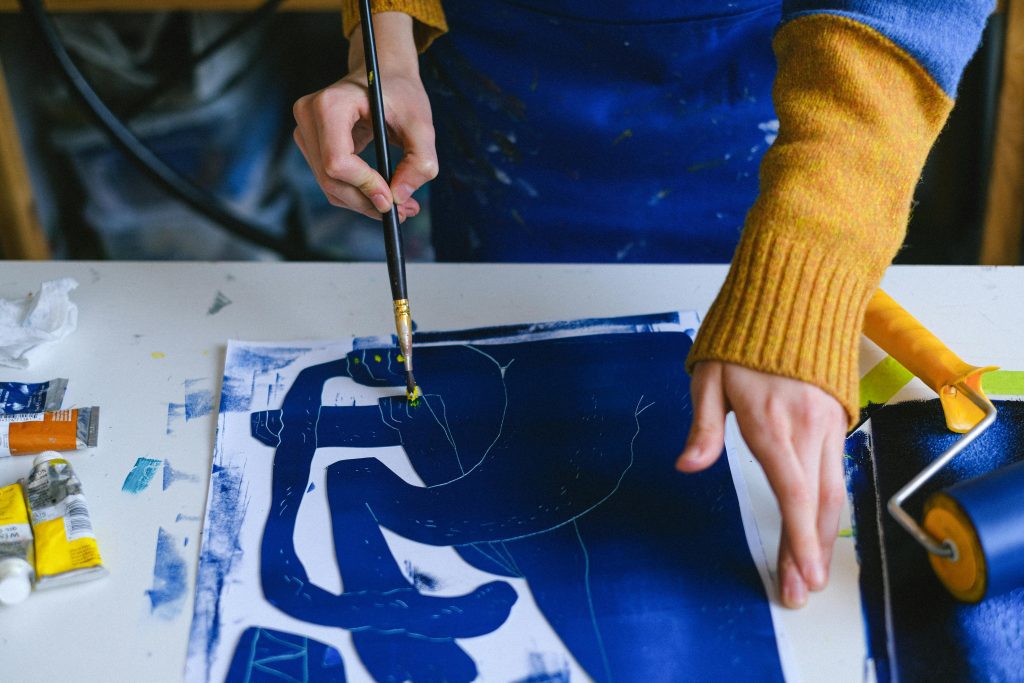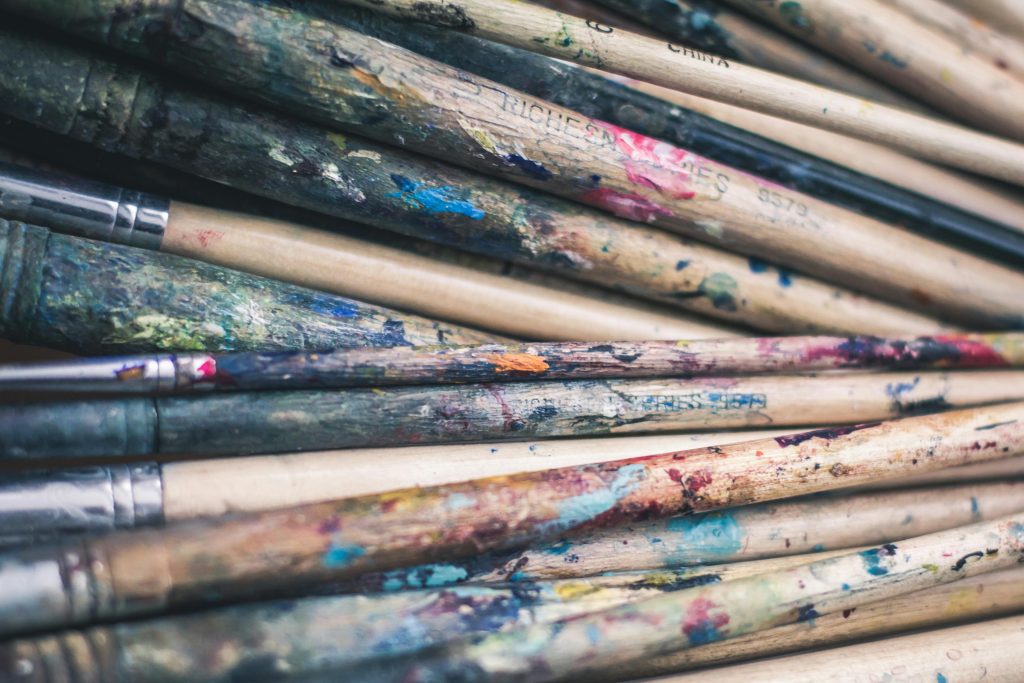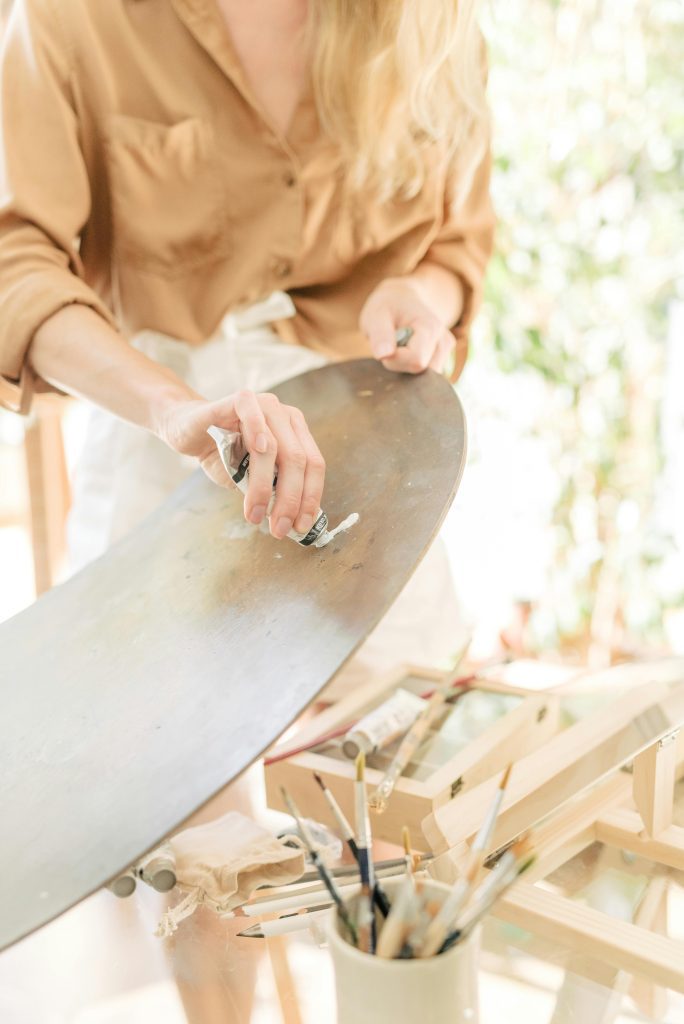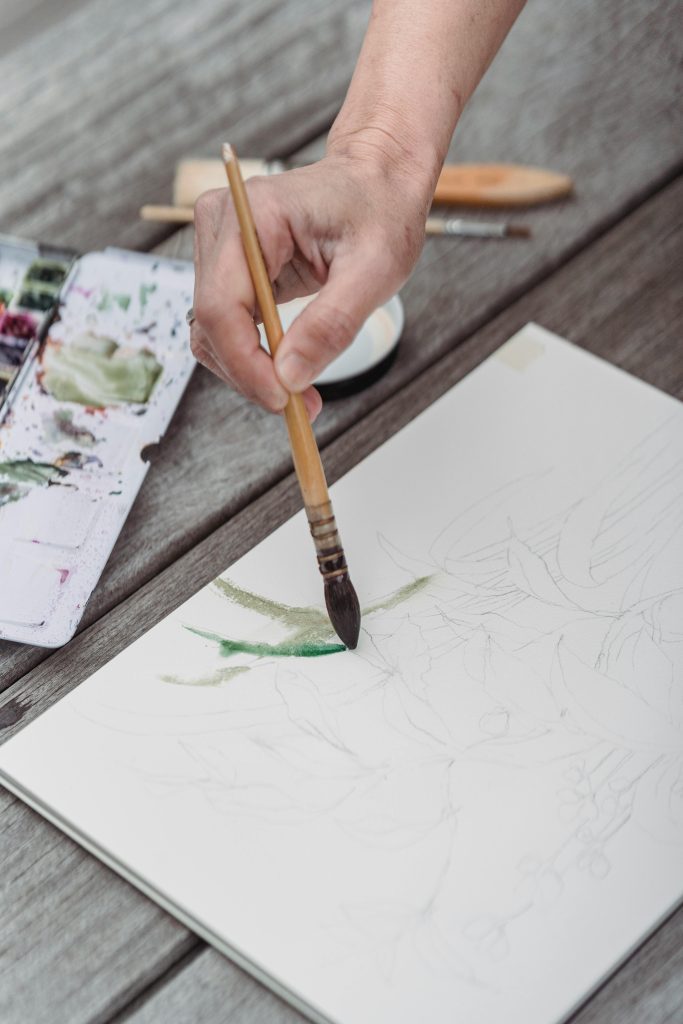The Portfolio Mistakes Every Artist Makes (and How to Avoid Them)

Think about your portfolio the way a professional thinks about their toolkit. Even the sharpest tool becomes dull if it is never maintained. A portfolio can look fresh and powerful when first created, but over time it risks becoming outdated, cluttered, or less representative of your artistic direction. A regular checkup is not just about adding new work, it is about asking whether the story being told still reflects your identity as an artist today.
Many artists forget that jurors, curators, and potential buyers are looking for clarity. If your portfolio contains works that no longer represent your strongest skills or current style, the effect can be confusing. Imagine reading a novel that changes genres mid-way through. The lack of consistency makes the reader less likely to finish. The same is true for portfolios that lack coherence.
A checkup also pushes you to think about presentation. The most talented artist can lose opportunities if their work is poorly documented, badly arranged, or lacking focus. Art deserves to be shown in its best light, which requires more than just uploading images. It requires intention.
Asking when you last reviewed your portfolio is an important starting point. Was it six months ago? A year? More? If too much time has passed, it is likely that your portfolio no longer matches where you are in your career. This mismatch can cost you opportunities without you even realizing it.
A portfolio checkup, in short, is not a chore. It is an act of care for your career. Just as you would not walk into an exhibition space with dusty canvases, you should not present a portfolio that feels neglected.
Are You Showing Too Much Instead of Just Enough?
One of the most common mistakes artists make is overloading their portfolio. The thinking goes: if ten artworks show my skills, then twenty must show them twice as well. Unfortunately, the effect is usually the opposite. Too much work overwhelms the viewer, making it harder for them to remember your strongest pieces. Instead of creating impact, an overstuffed portfolio dilutes it.
Imagine flipping through a book where every page is equally emphasized. Nothing stands out, so everything blurs together. That’s what happens in an overcrowded portfolio. Jurors may walk away with a vague sense of your range, but they won’t recall the specific pieces that could have made you memorable. The goal is clarity, not quantity.
A good rule of thumb is to choose fewer pieces but present them in a way that highlights their depth. Ten cohesive works can do far more for your career than twenty scattered ones. It’s not about showing everything you’ve ever done, it’s about curating a narrative. That narrative tells jurors, “This is who I am as an artist today.”
This doesn’t mean you should always discard older work. Sometimes an early piece still holds relevance, but you must ask whether it adds to your current story or distracts from it. If it distracts, set it aside. Think of your portfolio like a gallery wall. Would you hang every piece you’ve ever created, or would you carefully select what creates the most impact together?
The fix is simple: edit ruthlessly. Less is often more when it comes to leaving a lasting impression. By trimming your portfolio, you create space for your best work to shine instead of getting lost in the noise.
When Strong Pieces Get Lost in the Shuffle
Another common mistake is inconsistency. A portfolio may have excellent pieces, but if the style, format, or quality of documentation varies too much, it disrupts the overall flow. It’s like listening to a playlist where every song is from a completely different genre. Individually, they might be good, but together, they clash.
Consistency doesn’t mean every piece has to look the same. Instead, it means there should be a sense of cohesion that ties everything together. A juror should be able to see your personal voice across different works. If one piece looks highly polished and another looks rushed or poorly photographed, it creates doubt about your professionalism.
This mistake often shows up in technical details too. Some images may be cropped tightly while others have distracting backgrounds. Some files are named clearly, while others are labeled “final_version2.” These small details seem harmless, but they add up. They can make your portfolio feel less intentional and less serious than the work deserves.
The fix here is careful editing and standardization. Ensure all your images are presented in a consistent format, your text descriptions follow a uniform style, and your work flows in a way that feels deliberate. This doesn’t just make the portfolio easier to view, it communicates reliability and professionalism.
When you create consistency, you’re giving the viewer confidence. They stop noticing the flaws in presentation and start focusing on the art itself. And that’s exactly where you want their attention to be.

Does Your Portfolio Really Tell a Cohesive Story?
A strong portfolio isn’t just about visuals, it’s also about the words you use to frame your work. A common mistake is attaching weak or overly complex artist statements. Many artists either write something too vague, leaving the viewer unsure about the intention, or too academic, drowning the work in jargon. Both approaches hurt your chances.
Your artist statement is an opportunity to guide the juror’s eye. It doesn’t need to explain every detail, but it should offer a clear entry point into your work. Think of it as a bridge. Without it, jurors are left to guess, and their interpretation may not align with your goals. With it, they can connect more directly to what you want them to see.
Another mistake is recycling the same statement across years or across very different projects. If your work has evolved, your statement should reflect that. Using outdated language suggests you haven’t updated your portfolio thoughtfully. Remember, words carry just as much weight as images when it comes to first impressions.
The fix is to keep your statement clear, concise, and updated. Focus on the big picture: what motivates your art, what themes drive your practice, and what you want people to take away. Avoid jargon that only academics would understand. You want your words to be accessible to anyone who encounters your work, whether they are curators or members of the public.
Strong statements don’t overshadow your art, they enhance it. By writing with clarity, you show confidence in your vision and respect for the viewer’s time.
Why Blurry or Poor Photos Can Sink Great Art
Even the best artwork can be undermined by poor documentation. Blurry photos, bad lighting, or cluttered backgrounds are all too common in portfolios. The mistake isn’t in the art itself, but in how it’s presented. Jurors can only evaluate what they see, and if the images are weak, the work appears weak too.
Think about how many portfolios a juror or curator reviews in one sitting. They don’t have the luxury of imagining what your work might look like in ideal conditions. They only see what you give them. A poorly lit painting or a sculpture photographed in a messy studio instantly loses impact. The art deserves better, but the presentation holds it back.
This mistake is surprisingly common because photographing art well can be challenging. But it’s not optional. High-quality images are non-negotiable if you want to be taken seriously. The difference between a clear, professional photograph and a casual snapshot is the difference between someone stopping to look closer or quickly moving on.
The fix is to treat documentation as part of your practice. Learn basic photography techniques, or if possible, invest in a professional photographer. Ensure your images are evenly lit, sharply focused, and cropped to highlight the work without distractions. Think of your portfolio images as the stage where your art performs. If the stage is messy, the performance loses power.
When you prioritize quality images, you give your work the best chance to speak for itself. It’s not an extra step, it’s an essential one.
Still Using Old Work That Doesn’t Represent You?
A portfolio checkup often reveals one of the most subtle mistakes: relying too heavily on outdated work. Many artists include older pieces because they were once favorites or because they had success in the past. While that work may still hold value, if it no longer represents your current direction, it weakens your portfolio.
Outdated work creates confusion for jurors. They may wonder whether you’re still active, whether your style has changed dramatically, or whether you’re repeating old ideas. None of these impressions work in your favor. Even if the piece itself is strong, if it doesn’t fit the story of your present practice, it sends the wrong message.
This doesn’t mean you should erase your history as an artist. Older work has its place, especially in retrospective contexts or as part of a CV. But in a portfolio aimed at new opportunities, the focus should always be on the present. What do you want jurors, curators, or collectors to know about your work now? That’s the question your portfolio should answer.
The fix here is to make peace with letting go. It can be hard to set aside a piece that once felt central to your practice, but your portfolio isn’t about nostalgia. It’s about clarity. Choosing newer work that reflects your current vision shows that you are active, evolving, and ready for the opportunities ahead.
When you stop leaning on outdated pieces, you create space for your most relevant work to take center stage. And that’s what will resonate with decision-makers today.
Is Your Portfolio Speaking to the Right Audience?
Here’s something many artists overlook: the people reviewing your portfolio are not blank slates. They come in with certain expectations, shaped by the context they’re in. A curator who focuses on contemporary minimalism will not connect with a portfolio that feels like ten different directions stitched together. It’s not that your work is bad, it’s that it doesn’t read as a cohesive voice. Imagine walking into a restaurant and being served sushi, pasta, tacos, and pancakes all at once. Even if each dish is delicious, the lack of focus makes the meal feel scattered.
A strong portfolio makes people feel they’re in the hands of an artist with a point of view. You don’t need uniformity, but you do need a through-line. That could be a visual rhythm, a subject you keep circling back to, or even a way you handle materials. When the thread is clear, jurors and curators lean in because they can trust that you know who you are as an artist.
One way to test this is to show your portfolio to someone outside the art world. Ask them if they can describe what kind of artist you are after looking at it. If they hesitate or say, “I’m not really sure,” that’s a red flag. The goal is not to make every piece look the same, but to help your body of work read as belonging to one creator, not ten.
Think of your portfolio less like a random playlist and more like a well-crafted album. Each track has its own personality, but together they create a mood, a journey, a voice. When you start seeing your work this way, your portfolio will stop confusing audiences and start winning them over.
Are You Showing Too Much at Once?
It’s natural to want to show how much you’ve created over the years. But here’s the trap: a portfolio is not a warehouse tour, it’s a storefront display. No store crams every item they own in the window, because it overwhelms instead of attracting. Yet many artists do this by including every piece they’ve ever liked. The result? Reviewers flip through without absorbing anything.
Think about the people on the other side. They might have fifty portfolios to review in one sitting. If yours feels endless, they won’t have the energy to dig for the gems. Instead of adding, think about subtracting. Which works carry your strongest voice right now? Which pieces point toward the direction you want your career to move in? Those are the ones that deserve space.
Here’s a trick: after putting your portfolio together, step away for a week. Then come back with fresh eyes and ask, “Do I really need all of these?” Most artists find three or four works they can cut without regret. That’s how your best art gets the spotlight it deserves.
Fewer, stronger works give your portfolio air to breathe. Reviewers can pause, engage, and actually remember what they’ve seen. At the end of the day, you don’t want people to say, “Wow, that was a lot of work.” You want them to say, “I can’t stop thinking about that one piece.”

Are Weak Works Holding Back the Strong Ones?
Here’s a hard truth: your weakest work often speaks louder than your strongest. If one piece feels unfinished, clumsy, or outdated, it has a way of dragging everything else down. Jurors won’t ignore it just because the rest of your work shines. It’s a bit like being at a dinner party where one awkward comment ruins an otherwise great evening.
Many artists hold on to weaker works because of personal attachment. Maybe it was the first piece that felt like a breakthrough, or maybe it took ages to complete. But nostalgia doesn’t translate to strength in a portfolio. A reviewer won’t know the backstory, they’ll just see the piece that doesn’t belong.
Think of your portfolio like your best outfit. You wouldn’t wear shoes that don’t match just because you once loved them. Every item has to work together, or the whole look falls apart. In the same way, every piece in your portfolio should elevate the others, not weigh them down.
If letting go feels hard, don’t think of it as erasing your history. You can still love and keep those works privately. But when it comes to putting your best foot forward, the only question to ask is: does this piece make the others look better, or does it weaken the room? If it’s the latter, it’s time to take it out.

Are You Customizing for Each Opportunity?
A single portfolio will not fit every door you want to walk through. Yet many artists fall into the “one size fits all” trap. They send the same set of works to galleries, residencies, grants, and competitions, expecting each to respond the same way. The problem is, each context values different things.
Think of it like tailoring a résumé. You wouldn’t use the same version for a teaching job and a graphic design role. The skills overlap, but the emphasis shifts. The same goes for your portfolio. If you’re applying for a sculpture residency, lead with your best sculptural works. If it’s a contemporary painting call, highlight that instead.
This doesn’t mean you reinvent your portfolio every time. What helps is keeping a “master archive” of your works. From there, you can pull and arrange depending on who is looking. It shows you respect the reviewer’s time and understand what they care about.
Customization communicates professionalism in a way that even the strongest single portfolio can’t. It signals you are intentional, strategic, and aware of context. And that, often, is what separates the artists who get noticed from the ones who blend into the pile.
Does Your Portfolio Tell a Story?
Skill alone doesn’t stick in people’s minds, stories do. A portfolio that feels like a shuffled deck of cards makes it harder for reviewers to connect with you as an artist. But when there’s a flow, a sense of journey, the portfolio feels like a conversation rather than a collection of files.
Your story can come through in the way you order your works. For example, maybe you open with the piece that best represents your current style, then show how you’ve explored variations of that idea, and finally close with something ambitious that hints at where you’re heading. The rhythm matters more than the number of works.
Even a short statement placed before or after your images can create context that ties things together. Reviewers want to feel they’re meeting you, not just looking at anonymous art. When your portfolio feels like a guided walk rather than a random shuffle, they remember you.
Think about your favorite exhibitions. They’re never just a row of works; there’s a sequence, a mood, an emotional arc. Your portfolio should aim for the same effect. A good story doesn’t just show what you’ve done, it leaves people curious about what you’ll do next.
Are the Small Details Letting You Down?
Sometimes, it’s not the art that weakens a portfolio but the presentation. Crooked images, typos in the artist statement, or inconsistent layouts can create the impression that the portfolio was rushed. Reviewers may not always notice consciously, but these details shape their trust in you.
Think of it this way: if two portfolios contain equally strong work, but one has clean formatting and error-free text, which artist feels more professional? The small details matter because they tell others how seriously you take yourself.
Practical fixes go a long way. Proofread everything more than once, use consistent fonts, and make sure your images are crisp and evenly sized. Ask a friend to look it over, because fresh eyes catch what you miss.
It’s like setting a stage, the cleaner the stage, the brighter the spotlight on your performance. Those final touches might be the quietest part of your portfolio, but they often speak the loudest.
